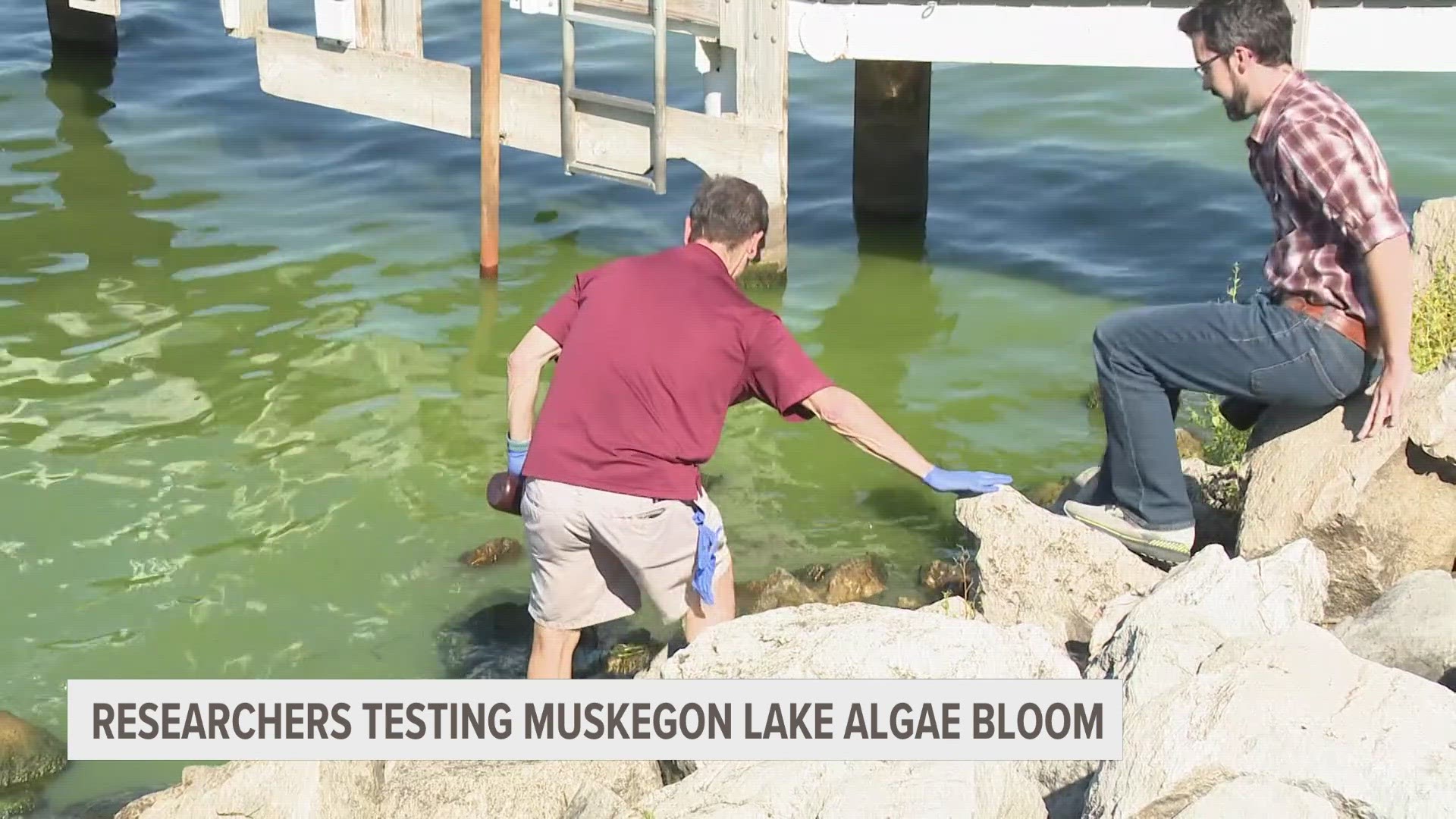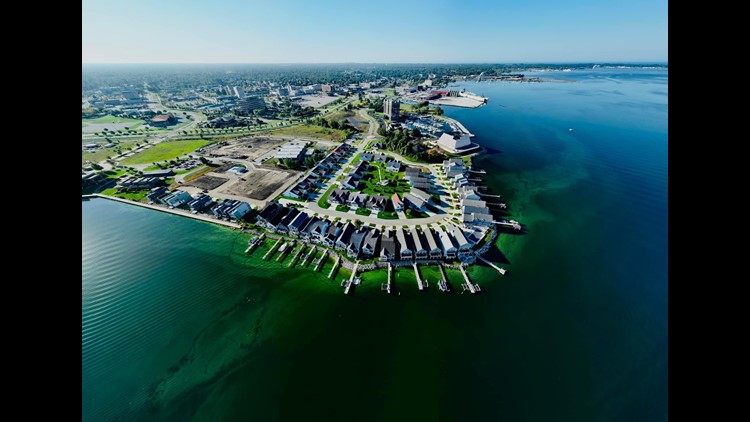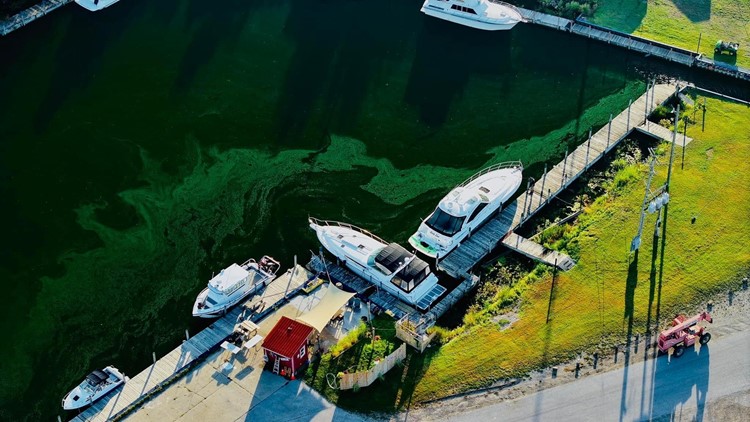MUSKEGON, Mich. — Muskegon researchers and Michigan state regulators are testing water out of Muskegon Lake for toxins after an apparent algae bloom appeared Monday.
Surveyors from Grand Valley State University Annis Water Resource Institute took samples and expect to get results back on Tuesday.
The bloom appears to be some type of cyanobacteria, often called blue-green algae. While it's not clear yet if there are toxins related to this bloom, officials are warning folks in the area to keep children and pets out of the water near the bloom as a precaution.
"If it's producing the toxin, you don't want full-body contact or swimming with it... you would not want your pets to be drinking it," Mike Hassett, an Institute scientific technician on site Monday related.
"We've seen it here in the past in some years, but not every year," Hassett added. "It's one of those areas of research that scientists are still trying to figure out how exactly to predict and model when and where it will show up."
David Ruck, of Great Lakes Outreach Media, spotted the apparent bloom Monday.
"While I was up in the air, kind of turned around and noticed Muskegon Lake's looking a little bit green today," Ruck related. "So that's kind of how this was brought to my attention, just knowing what that was immediately. Then as I started to fly around and look into it, it was apparent that it wasn't just along the shoreline, but actually all the way out."
Ruck understands the impact algae blooms have on water systems and alerted city and state officials. He produced a documentary called The Erie Situation.
"In this case, today, it's very plain, very obvious," he noted. "This could be basically harmless. Totally benign. That's kind of one of the creepy things about it too is, if it's a small bloom, it could just be this little shimmer, but it could just be 100-percent toxic. So if it's there, you want to know whether it's toxic."
Here are some of the photos he snapped of the bloom:
Photos show scale of algae bloom on Muskegon Lake
The state says it is impossible to determine whether algal blooms contain harmful toxins just by looking at them, so you're better off avoiding contact with blooms or significant surface scums.
Summer is the peak time for harmful algal bloom (HAB) which can present health hazards to people and pets.
In general, blooms develop when:
- High amounts of nutrients are in the water.
- Surface water conditions are calm.
- Water temperatures are high.
- Zebra or quagga mussels are present in low-nutrient lakes.
Here's what you should do if you think you've found a bloom
EGLE and the Michigan Department of Health and Human Services (MDHHS) sample for HABs on a limited basis and work with local health departments to protect the public when toxins are discovered; however, some areas affected by HABs may go undetected.
Suspicious-looking algae can be reported to EGLE by calling the Environmental Assistance Center at 1-800-662-9278 or sending an e-mail to AlgaeBloom@Michigan.gov. Photographs are very helpful.
Here's a picture guide to help you identify blooms.
►Make it easy to keep up to date with more stories like this. Download the 13 ON YOUR SIDE app now.
Have a news tip? Email news@13onyourside.com, visit our Facebook page or Twitter. Subscribe to our YouTube channel.









